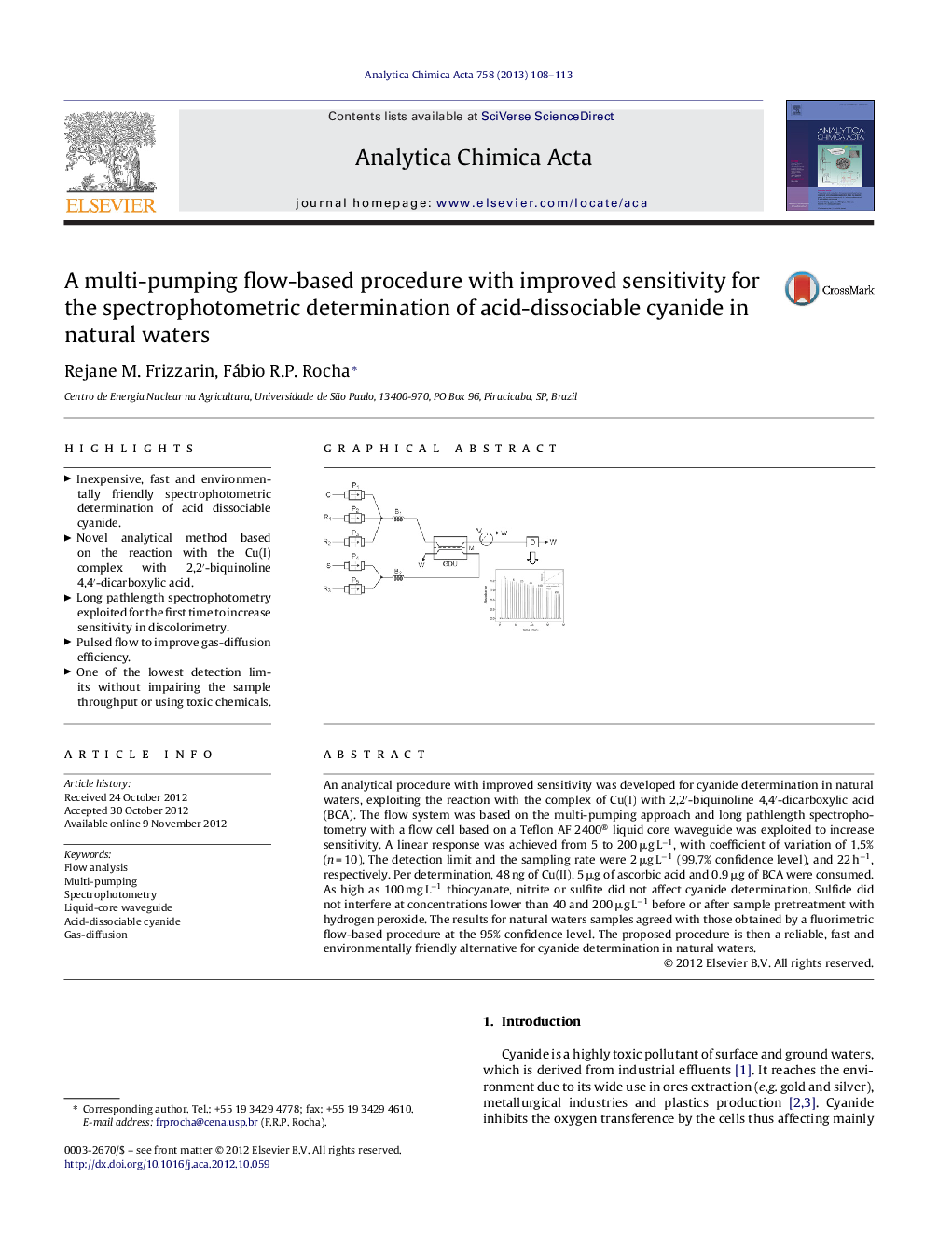| Article ID | Journal | Published Year | Pages | File Type |
|---|---|---|---|---|
| 1165641 | Analytica Chimica Acta | 2013 | 6 Pages |
An analytical procedure with improved sensitivity was developed for cyanide determination in natural waters, exploiting the reaction with the complex of Cu(I) with 2,2′-biquinoline 4,4′-dicarboxylic acid (BCA). The flow system was based on the multi-pumping approach and long pathlength spectrophotometry with a flow cell based on a Teflon AF 2400® liquid core waveguide was exploited to increase sensitivity. A linear response was achieved from 5 to 200 μg L−1, with coefficient of variation of 1.5% (n = 10). The detection limit and the sampling rate were 2 μg L−1 (99.7% confidence level), and 22 h−1, respectively. Per determination, 48 ng of Cu(II), 5 μg of ascorbic acid and 0.9 μg of BCA were consumed. As high as 100 mg L−1 thiocyanate, nitrite or sulfite did not affect cyanide determination. Sulfide did not interfere at concentrations lower than 40 and 200 μg L−1 before or after sample pretreatment with hydrogen peroxide. The results for natural waters samples agreed with those obtained by a fluorimetric flow-based procedure at the 95% confidence level. The proposed procedure is then a reliable, fast and environmentally friendly alternative for cyanide determination in natural waters.
Graphical abstractFigure optionsDownload full-size imageDownload as PowerPoint slideHighlights► Inexpensive, fast and environmentally friendly spectrophotometric determination of acid dissociable cyanide. ► Novel analytical method based on the reaction with the Cu(I) complex with 2,2′-biquinoline 4,4′-dicarboxylic acid. ► Long pathlength spectrophotometry exploited for the first time to increase sensitivity in discolorimetry. ► Pulsed flow to improve gas-diffusion efficiency. ► One of the lowest detection limits without impairing the sample throughput or using toxic chemicals.
